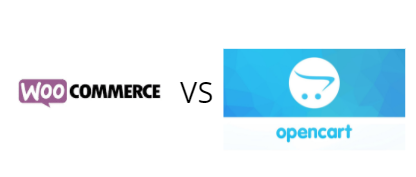
WooCommerce Vs Open Cart
What is WooCommerce? What is it for?
WooCommerce is an eCommerce software that makes it easy to sell products and services online for free. Over the years, it has become the world’s most popular Commerce platform used by millions of small and medium-sized businesses (online stores). WooCommerce was launched in 2011 and had a strong development team behind it. Strengthened by this, and with its ever-growing popularity, WooCommerce continues to get better and better.
WooCommerce is being developed as a WordPress extension, which is one of the most popular website builders on the web. This helps users build an eCommerce website from scratch or add a shopping cart functionality to an existing website.
As open-source software, WooCommerce is free to download and use. However, while WooCommerce software is free, you still need a domain name and a web hosting service to set up a website, which costs money. We will talk more about WooCommerce prices later in this article.
WooCommerce is for selling products and services. In particular, it makes these things more accessible and accessible. You can sell digital and physical products, manage inventory and shipping, take secure payments, and set taxes automatically. You maintain 100% control over all your data, support for mobile devices, and the ability to rate your sites unlimited. Like WordPress, WooCommerce is also free and open-source. Apart from its premium feel, it is entirely free for anyone to download, use and modify.
How to make a WooCommerce website?
Also, although powerful and flexible, it is too easy for beginners to use. With WooCommerce, anyone can set up and use an active online store from their WordPress website without knowing anything about code at all.
To make a WooCommerce website from scratch, you have to do the following:
- Domain name. This is your online website address, e.g., wbebenerner.com
- Certificate An SSL certificate to securely accept payments made online
Yes, you need to pay for these three things to build any website (not just WooCommerce).
Your online store (WooCommerce prices) will depend on what services you choose to purchase for your website. You can easily manage costs by buying only what you need.
Remember, you can add other things over time as your business starts to make money.
Typically, web hosting can cost you $ 7.99 / month to get first place; a domain name costs $ 14.99 per year, and the SSL certificate around $ 69.99 per year.
WooCommerce Vs Open Cart
WooCommerce is three years younger than OpenCart because it was not launched until 2011. However, instead of being built as an independent eCommerce platform – WooThemes, its developer – found as a WordPress open source plugin that converts a standard WordPress site into a fully-fledged online store with the same database of free and paid contributions from the public (as a theme for -WordPress and market plugin market).
And that alone is a kick when you come to think of it. It just means you need to set up a WordPress site before installing WooCommerce.
However, in hindsight, WordPress CMS has enjoyed an ongoing follow-up over the years with a vibrant community of technology and eCommerce tools. This, combined with WooCommerce’s eCommerce performance, has made it a huge success for the industry.
The flexibility of WooCommerce stems from the rich integration it offers. You can quickly improve your eCommerce skills by using such tools. And yes, it applies to the whole business environment – from startups to big business.
OpenCart and WooCommerce are both designed to support a wide range of online businesses through eCommerce functionality. However, while OpenCart is a fully open-source platform, WooCommerce exists as a WordPress plugin. As a result, WooCommerce is installed by WordPress users who want to convert existing sites into online stores. And OpenCart, on the other hand, does not require an existing site.
That means both platforms are easy to use and offer many customization options to enable online stores. OpenCart users can use its extensions, and WooCommerce users get its many integrations. When it comes to changing the overall look of a site, they both offer many flexible themes to choose from.




